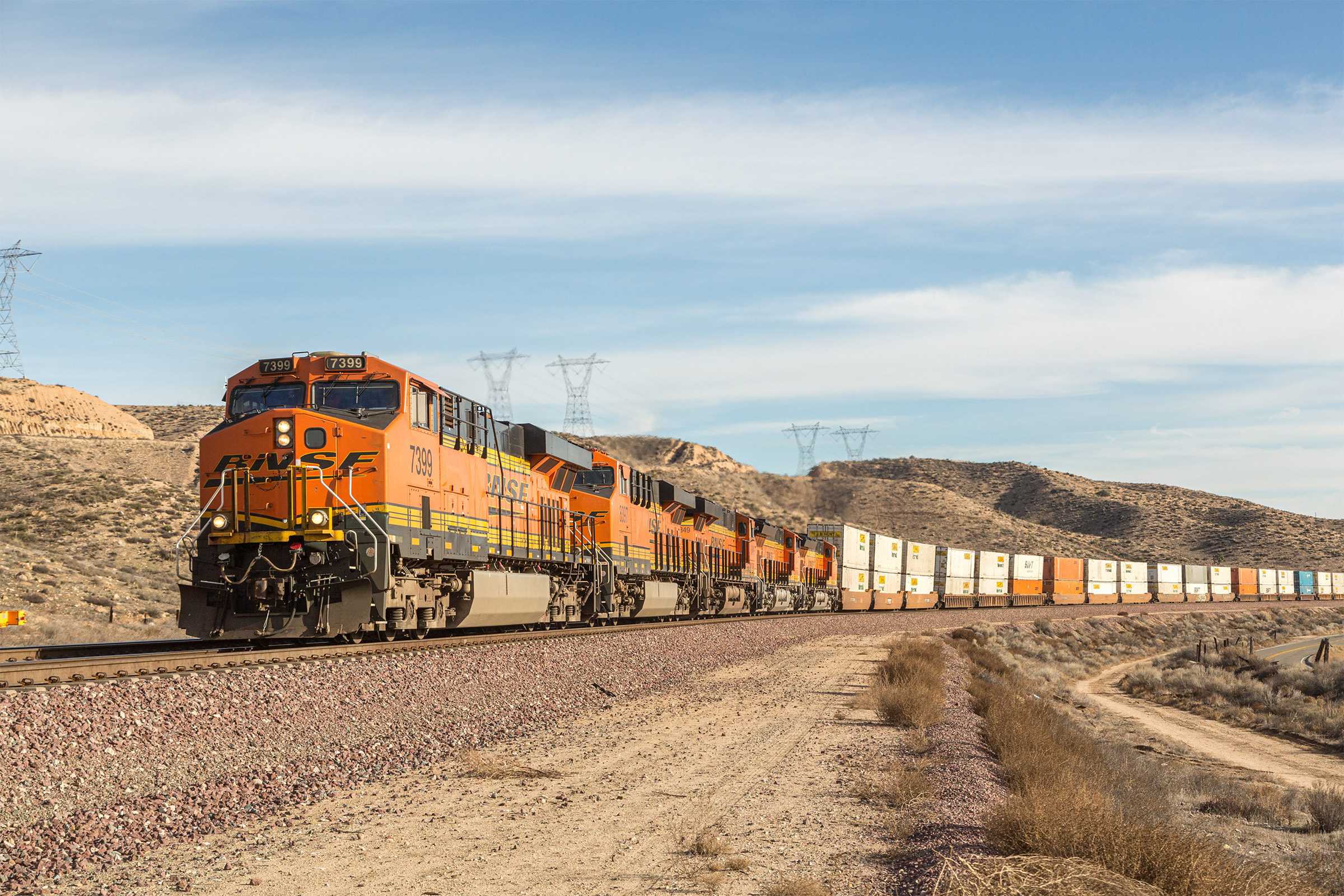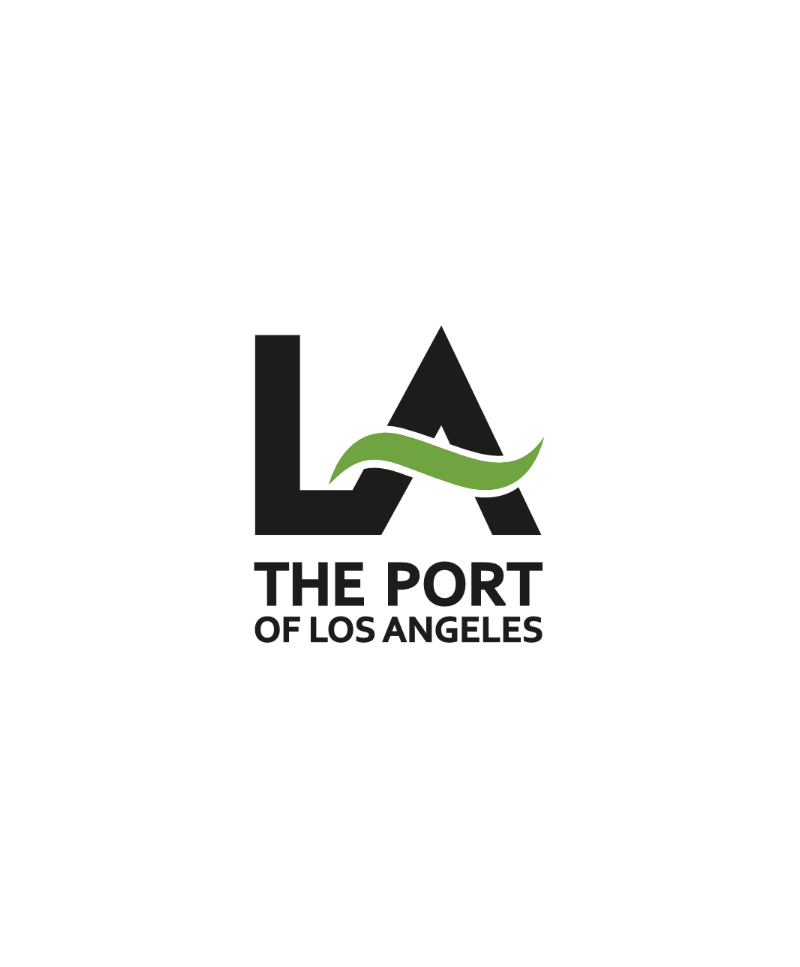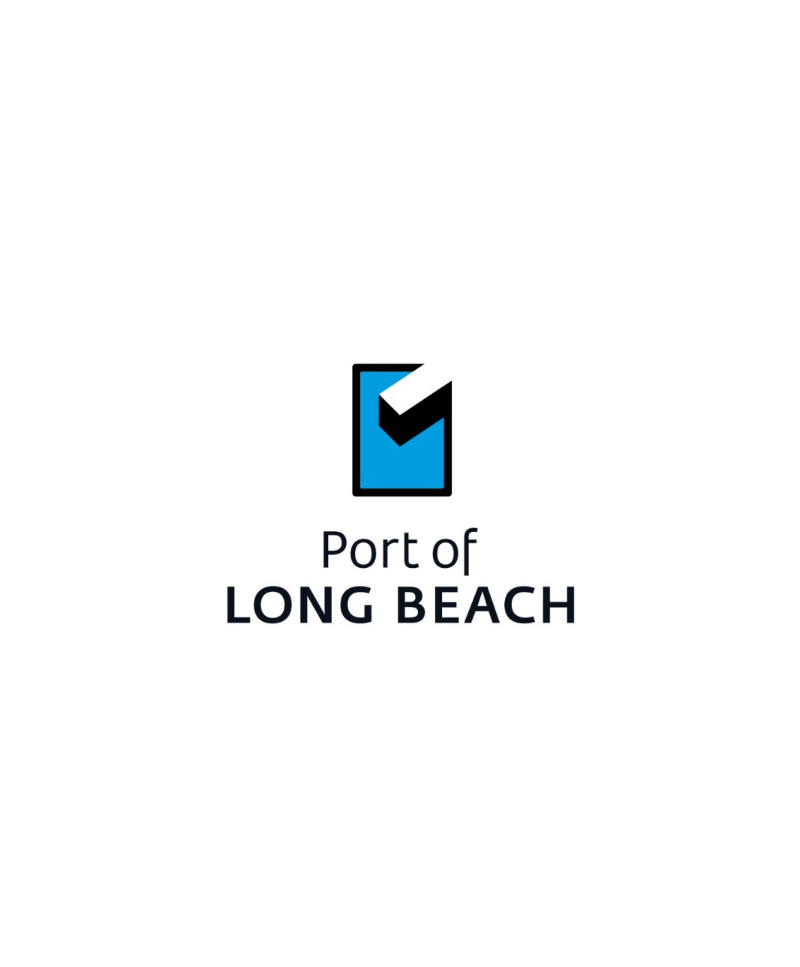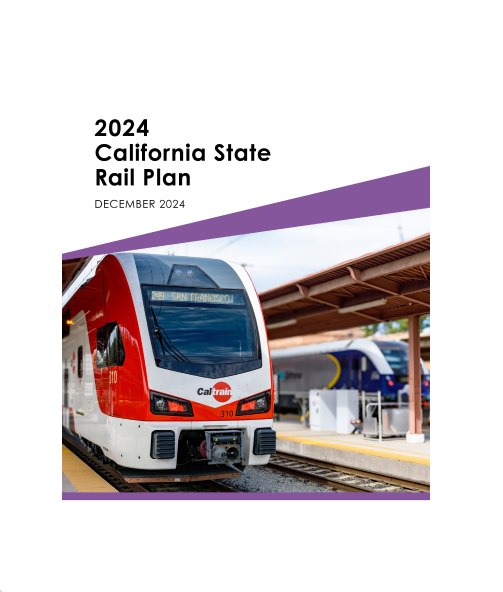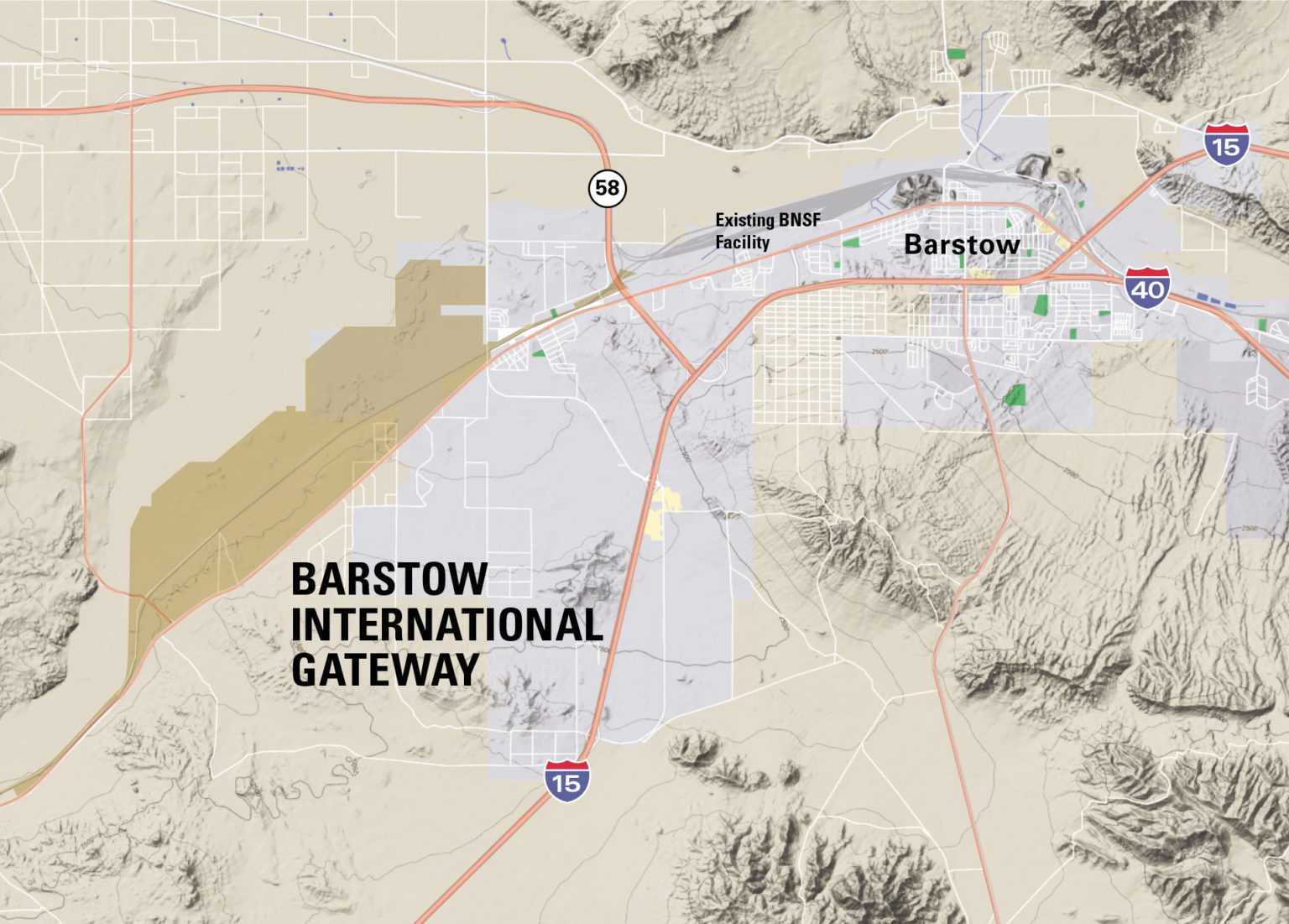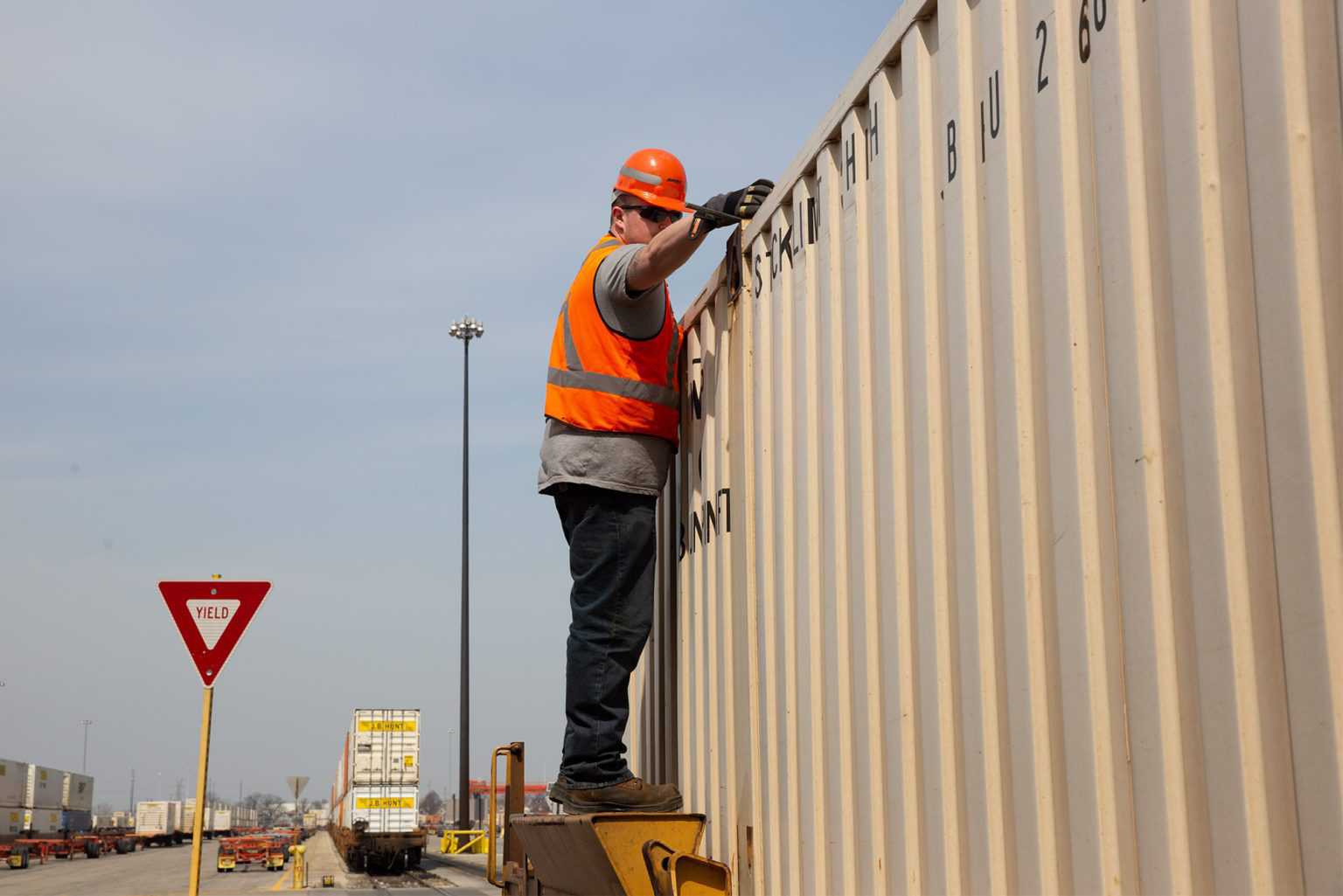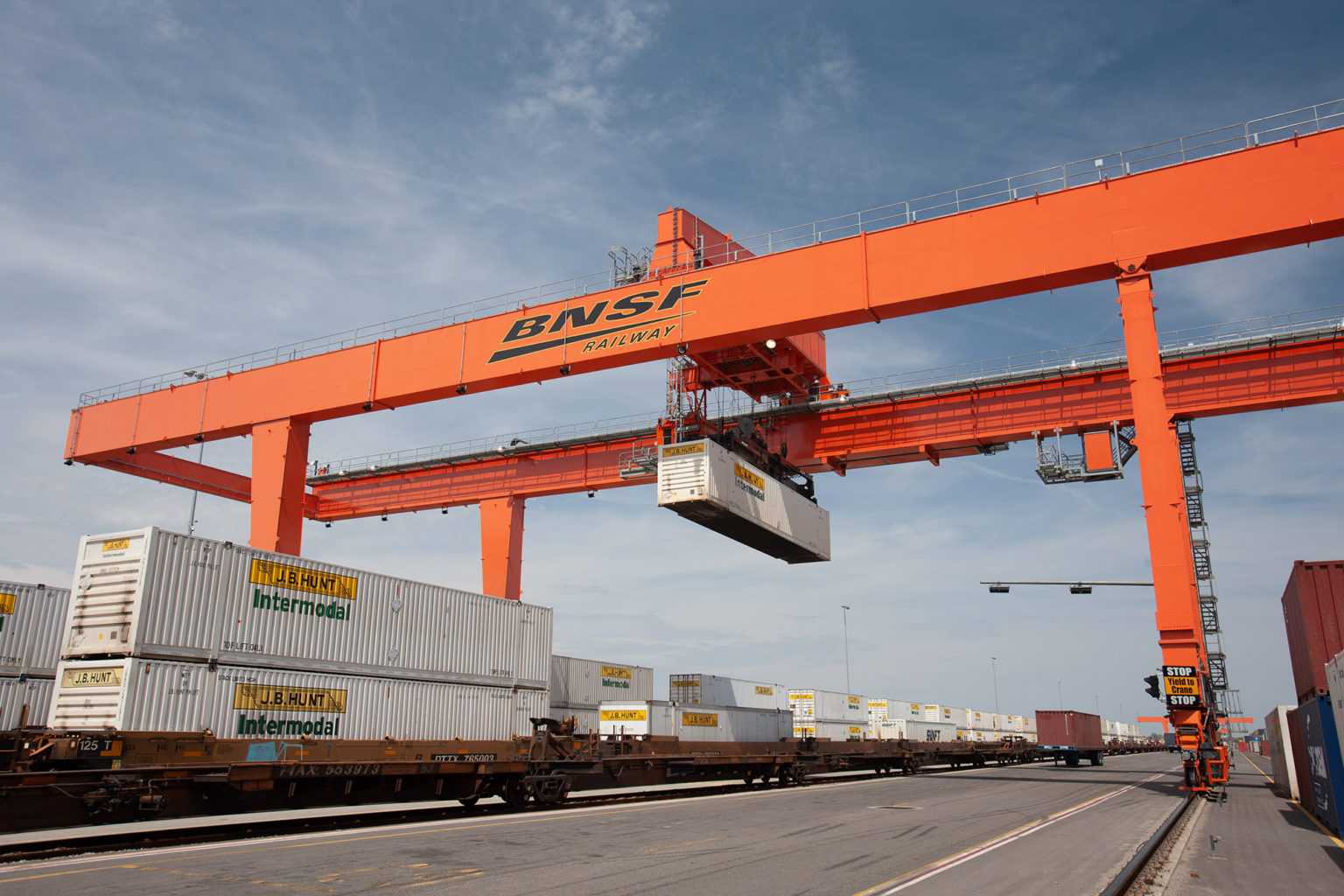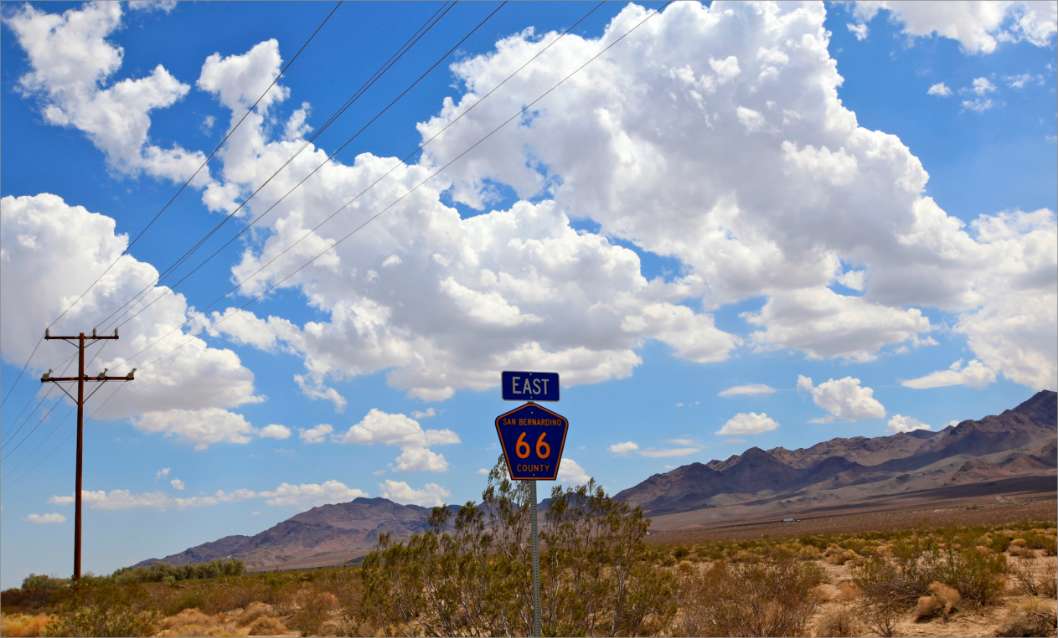Project Overview
BNSF Railway plans to invest more than $1.5 billion to construct a state-of-the-art master-planned rail facility in Southern California—and the first being developed by a Class 1 railroad. The Barstow International Gateway will be an approximately 4,500-acre new integrated rail facility on the west side of Barstow, consisting of a rail yard, intermodal facility and warehouses for transloading freight from international containers to domestic containers.
The facility will allow the direct transfer of containers from ships at the Ports of Los Angeles and Long Beach to trains for transport through the Alameda Corridor onto the BNSF mainline up to Barstow.
Once the containers reach the Barstow International Gateway, they will be processed at the facility using cargo-handling equipment powered by clean energy, and then staged and built into trains moving east via BNSF’s network across the nation. Westbound freight will similarly be processed at the facility to more efficiently bring trains to the ports and other California terminals.

